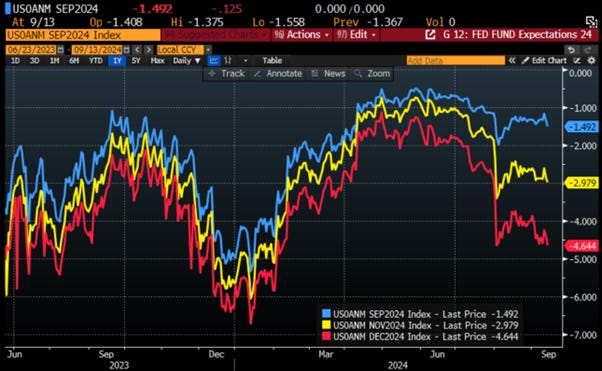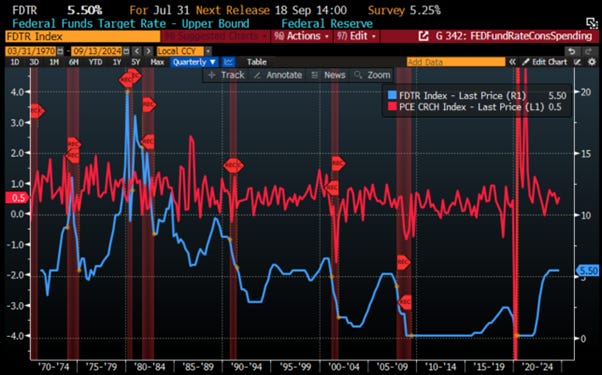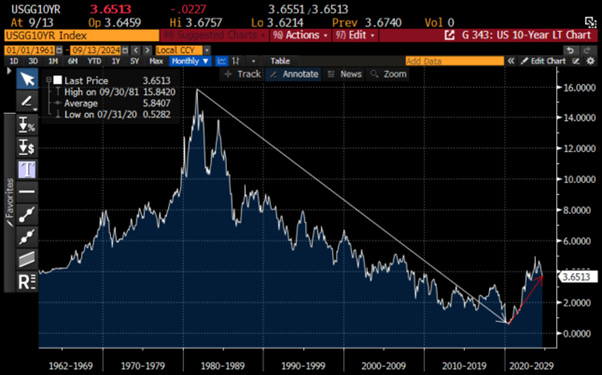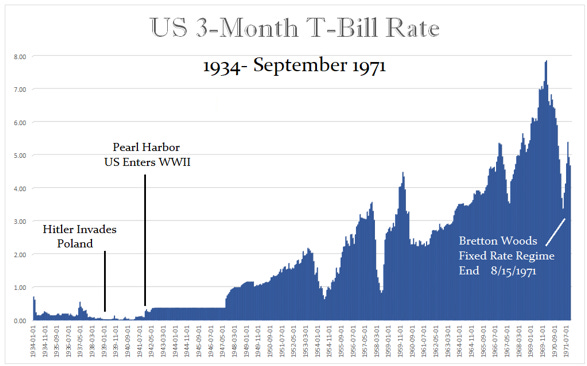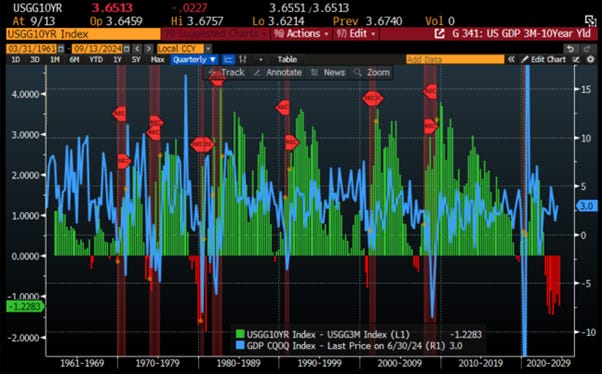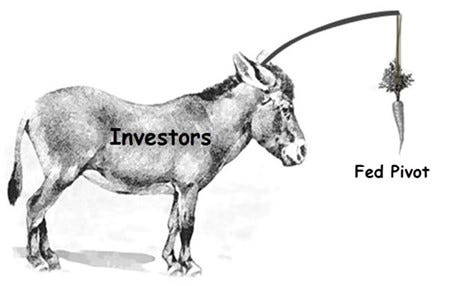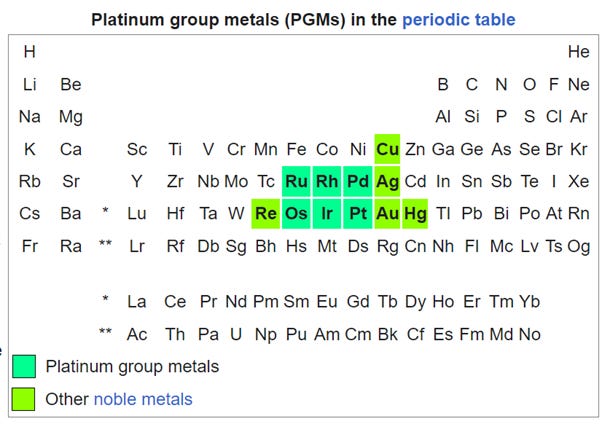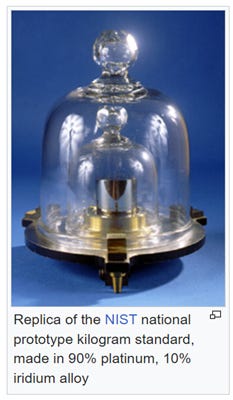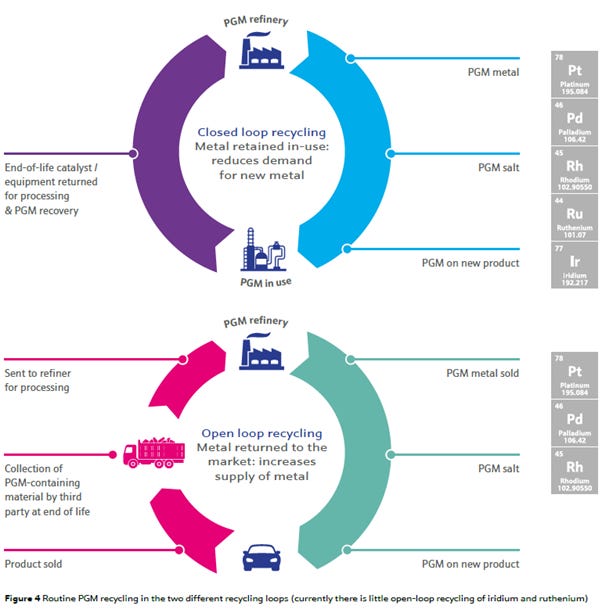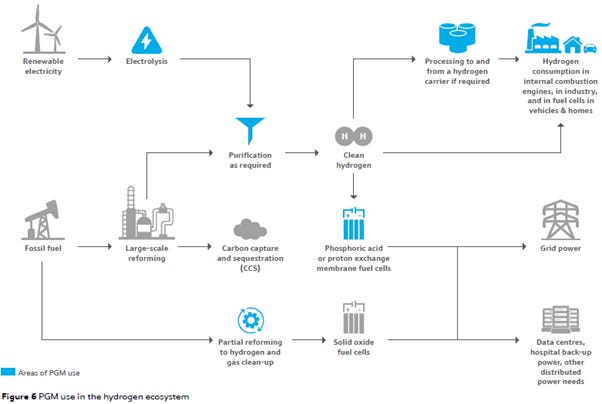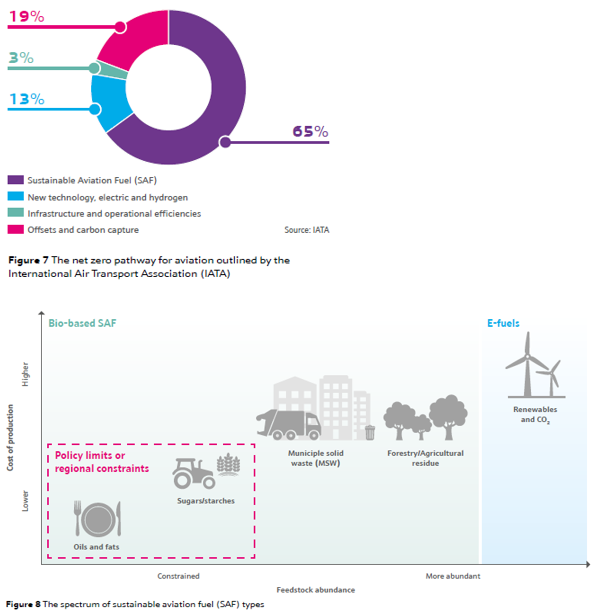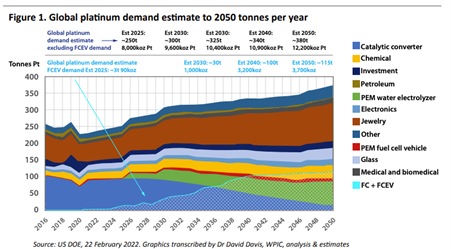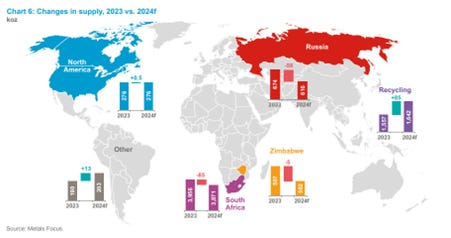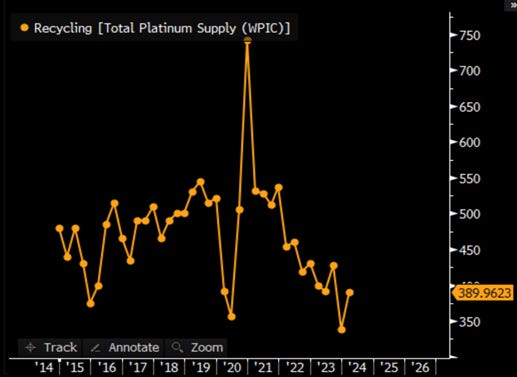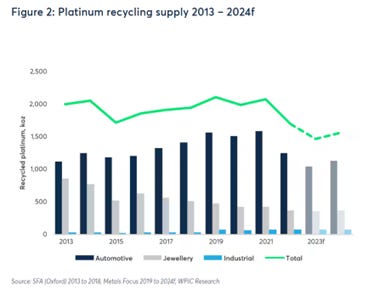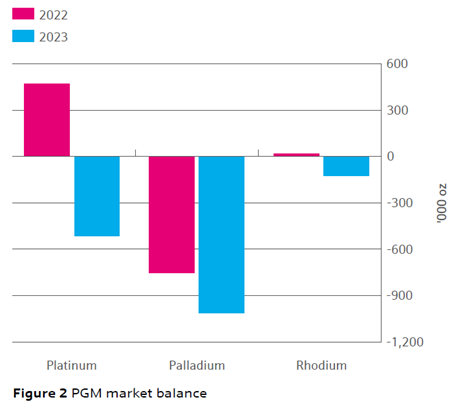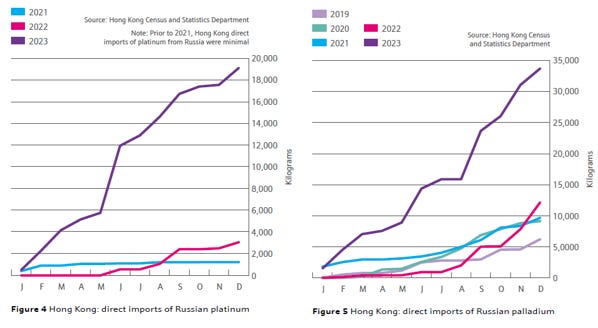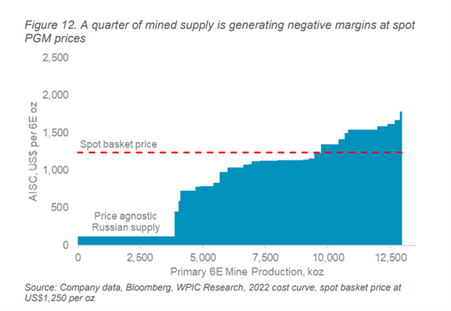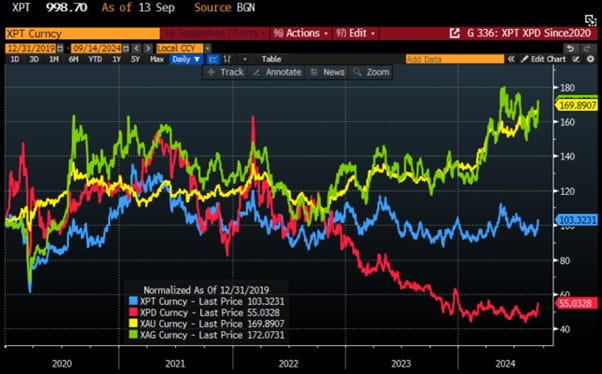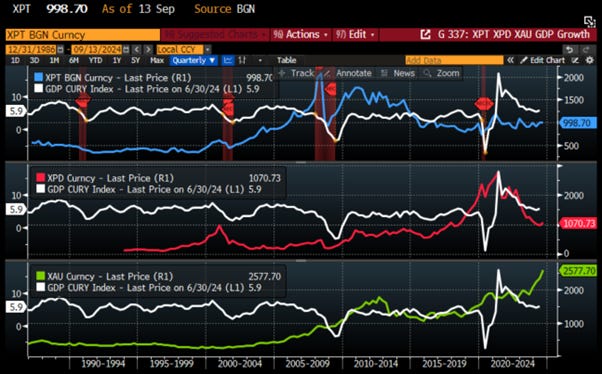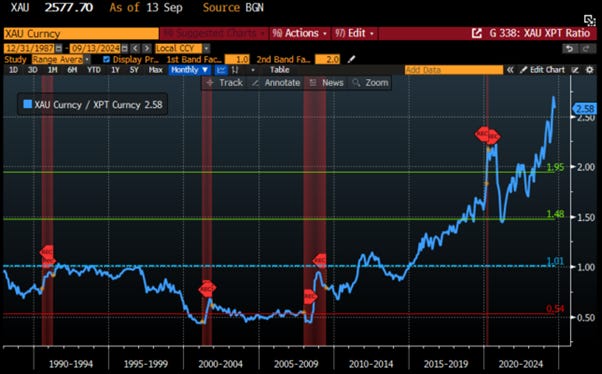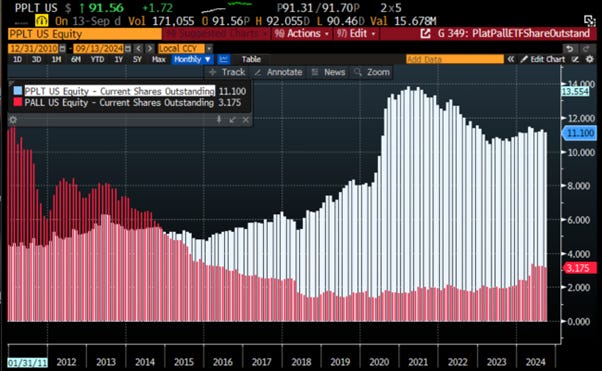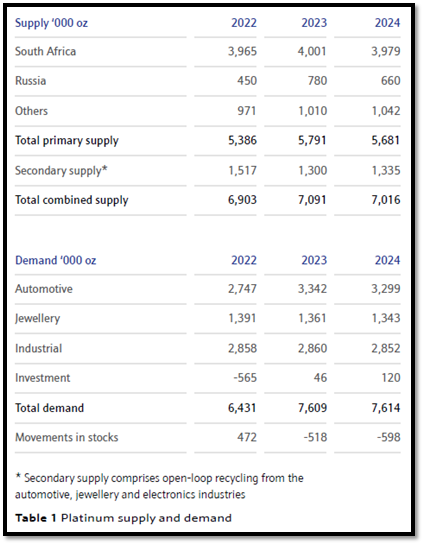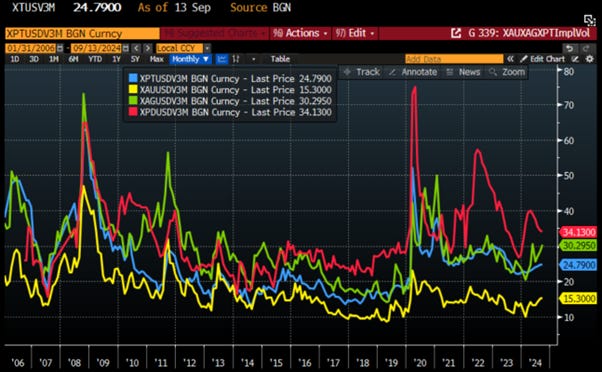Make Platinum Great Money Again!
As the disinflationary illusion is over, the Federal Reserve will most likely lower interest rates on September 18th, primarily as a face-saving move for the FED Chairman, who has become impotent at managing the US economy as he decided to declare ‘mission accomplished’ but unlikely ‘completed’.
While Jerome Powell made it crystal clear in the mountains of Wyoming that ‘The time has come’ for a shift in US monetary policy, with rising hourly earnings, even amid a lower August Non-Farm Payroll, and core CPI still well above 3.0% YoY and rising again, market expectations that the FED will cut its federal funds target range by a full percentage point or more by year-end are completely phantasmagorical.
By making a symbolic and politically partisan driven 25-basis-point cut to the FED funds rate, Jerome Powell could save face, support the current administration, and avoid alienating the opposition, which has vowed to reform the FED if elected. Investors should understand that this small cut won’t alter the broader economic outlook. With growing fears of war and civil unrests and a highly contentious election ahead, uncertainty will rise, leading to a decline in consumer spending whoever is declared winner of the political circus around the White House.
FED Fund Rate (blue line); US Personal Consumption Expenditures Nominal Dollars MoM SA (red line) & US Recessions.
Ultimately, what’s reflected in the 10-year long-term rates is clearly the winds of war. From 1981 until 2020, the US government benefited from a 39-year decline in the 10-year yield. Then came the reckless Keynesian spending and regulations tied to the climate change agenda and diversity and equality initiatives, which mainly served to expand uneconomical bureaucracy and create more obstacles for entrepreneurs. This has already led to shortages and supply-driven inflation which will worsen as more bankers’ wars spread across the world.
The high short-dated yields (i.e. 3-month T-Bill rate) signals the looming threat of war. Looking back at history in a scenario which sounds again familiar, when Hitler invaded Poland, Franklin Delano Roosevelt repeatedly sought to bring the US into World War II, but Congress resisted. FDR took several steps to provoke Japan into attacking Pearl Harbor. Once the attack occurred, US interest rates began to rise as the nation entered the war. The flatline in rates that followed reflected the Federal Reserve's agreement to cap rates during the war.
The yield curve that truly matters is the spread between the 10-year yield and the 3-month rate. With the 3-month rate at 4.75% and the 10-year yield at 3.65%, the curve remains heavily inverted, reflecting the Federal Reserve's ongoing effort to combat inflation, which was triggered by (1) COVID lockdowns and (2) sanctions on Russian energy sales. However, no level of rising interest rates can resolve this type of inflation. The US will likely face a sovereign crisis once it officially enters in conflict with the Global South. Meanwhile, Japan and Europe, particularly France, which is heading for a collapse under the leadership of ‘Petit Roi’ Macron, will face their own sovereign debt crises first, as they are at the epicentre of the forever bankers’ wars driven by Washington's warmongers.
US 10-Year Yield-US 3 Months Yield (Histogram); US GDP Annualized QoQ Growth (blue line) & US Recessions.
Regardless of who occupies the White House next, Powell and his PhD colleagues know that interest rates always rise during war. The misguided Wall Street bankers will once again be wrong in thinking rate cuts will solve problems, which will only worsen under 'Kamunism.', as ‘kleptocrats’ and ‘kakistocrats’ keep ruling the western world.
While investors should by now be accustomed to the role of precious metals in their portfolios and the historical significance of physical gold and silver as money and a store of wealth, there is another side to precious metals that is less well known: the Platinum Group Metals (PGMs).
The platinum-group metals (PGMs), also known as platinoids, platinides, platinum metals, or platinum-group elements (PGEs), consist of six noble, precious metallic elements clustered in the periodic table. These elements are all transition metals located in the d-block (groups 8, 9, and 10, periods 5 and 6). The six PGMs are ruthenium, rhodium, palladium, osmium, iridium, and platinum. They share similar physical and chemical properties and are often found together in mineral deposits. However, they can be subdivided into two groups based on their geological behaviour: the iridium-group PGMs (IPGEs: Os, Ir, Ru) and the palladium-group PGMs (PPGEs: Rh, Pt, Pd).
Platinum was valued by ancient civilizations in South America, notably the La Tolita Culture, and in Egypt. It was used in ceremonial jewellery and mixed with gold, as seen in the 700 BC Egyptian Casket of Thebes. Indigenous cultures, like the Muisca Indians of Colombia, likely extracted and shaped platinum from ores through hammering, sintering, and annealing.
Platinum and platinum-rich alloys were known to pre-Columbian Americans, but the first European reference to platinum came in 1557 from Italian humanist Julius Caesar Scaliger, who described a metal found in Central American mines that couldn't be melted with Spanish techniques. The name "platinum" comes from the Spanish word platina ("little silver"), as Spanish settlers in Colombia saw it as an impurity in their silver mining. By 1815, rhodium, palladium, iridium, and osmium had been discovered. Industrial PGM mining began in the 19th century, especially in South Africa’s Bushveld Complex, one of the largest known PGM deposits. Over the years, it was discovered that the Platinum metals have unique catalytic properties and are highly resistant to wear and tarnish, making them ideal for fine jewellery. They also exhibit resistance to chemical attack, excellent high-temperature performance, high strength, good ductility, and stable electrical properties.
The global Platinum Group Metals (PGM) market has been established for over 50 years, driven by industrial use in various applications. Known for their irreplaceable properties, PGMs are widely used in jewellery as well, but the biggest demand comes from automotive catalytic converters that reduce vehicle emissions. PGMs are used in numerous industrial processes, including petroleum refining, pharmaceutical synthesis, and in products like computer hard drives, pacemakers, and airplane engines. They are also sought for investment purposes, primarily in ETFs backed by physical metal or in the form of bars and coins.
With the projected decline in internal combustion engine (ICE) vehicle production, there’s growing availability of platinum, palladium, and rhodium, along with more favourable prices for palladium and rhodium. This creates a rare opportunity compared to other critical materials, like those used in lithium-ion batteries, where supply is tightening. PGMs benefit from well-established supply chains and infrastructure, ongoing investments in efficiency and sustainability, and high recycling rates. Their use is often driven by necessity, offering superior efficiency, low energy consumption, and minimal waste. Key advantages include:
Strong availability and stable supply.
A normalizing price environment.
Mature circularity with high recycling.
Low-intensity usage in various applications.
Platinum group metals (PGMs) are often classified as ‘critical metals,’ but their supply-demand dynamics are less constrained compared to other critical materials. Demand for PGMs is shifting to new technologies, often replacing older uses. For example, platinum’s role in internal combustion engine (ICE) vehicles is transitioning to fuel cell electric vehicles (FCEVs). PGM supply chains are well-established, with South Africa playing a dominant role. In 2023, PGM mining contributed 1.6% to South Africa’s GDP and nearly 10% of its merchandise export value. South Africa’s Bushveld Igneous Complex (BIC) remains a vast and rich source of PGMs, making alternative sources, like seabed or asteroid mining, unnecessary and unlikely to compete. Recycled PGMs, particularly from catalytic converters in ICE vehicles, will remain a significant supply source for decades. Even after ICE vehicle sales cease, as projected for Europe by 2035, PGM recycling from auto catalysts will continue to supply platinum, palladium, and rhodium well into the future.
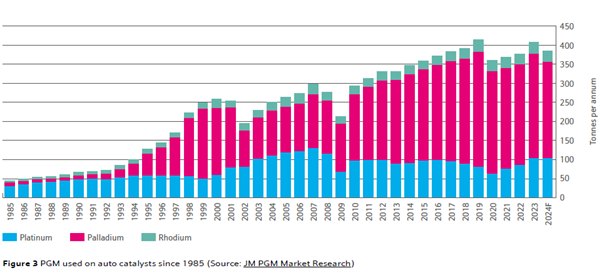
In addition to catalytic converters, other above-ground sources of PGMs exist, many of which are part of closed-loop recycling systems, returning the metals to their original owners. Although not included in official recycling figures, this practice is common for all PGMs, including iridium and ruthenium. Effective recovery from newer materials, such as catalyst-coated membranes (CCMs) in PEM electrolysers and fuel cells, is already integrated into existing recycling processes. PGM refiners continuously innovate to enhance recycling for specific materials, such as recent advancements in recovering not only PGMs but also valuable membrane material (ionomer) from CCMs. For new PGM users, circularity is built-in, provided they ensure end-of-life materials reach appropriate secondary refiners.
While still in its early stages, demand for PGMs has been increasingly linked to the energy transition process. One key area is clean hydrogen production, achieved through either electrolysis or converting methane from fossil fuels with carbon capture. Hydrogen has numerous applications in transportation, industry, and power generation, and can also be converted to ammonia or other fuels. Proton exchange membrane (PEM) technology heavily relies on PGM catalysts—platinum in PEM fuel cells, and platinum, iridium, and ruthenium in PEM electrolysers. Platinum also acts as an anti-corrosion plating for electrolyser components. Additionally, PGMs are used in other fuel cell and electrolyser technologies, such as anion exchange membrane (AEM) electrolysers and phosphoric acid fuel cells, a mature technology used in South Korea. Solid oxide fuel cells (SOFCs), while not requiring PGMs directly, depend on PGM catalysts (rhodium, palladium, and platinum) for natural gas processing. These fuel cells are gaining traction for distributed power generation. The handling and transport of hydrogen, using ‘hydrogen carriers,’ also create PGM demand, with platinum and ruthenium often catalysing the processes for hydrogen storage and retrieval.
In hydrogen purification, platinum catalysts and palladium membranes are essential, with palladium also playing a role in hydrogen sensing. Altogether, PGMs are crucial in enabling the hydrogen economy and driving the transition to net zero.
Aviation, which currently accounts for 3% of global energy consumption, is another sector driving new demand for PGMs. As the industry pursues net zero, various technologies will rely on PGMs. Hydrogen-powered aviation, through either jet engines or fuel cells, is being tested for shorter-haul flights, while long-range flights require alternative fuels. While like uneconomical over the long term, the industry is focusing on sustainable aviation fuel (SAF), which can replace fossil jet fuel but is made from biomass or by combining clean hydrogen with captured CO2. Platinum catalysts are crucial in producing SAF from vegetable oils (HEFA or HVO), though this supply is limited. PGMs are also used in other processes to convert biomass and waste into SAF. Additionally, Fischer-Tropsch synthesis, which combines captured CO2 with clean hydrogen to create SAF, requires PGMs in electrolysis and purification processes. Thus, PGMs play a key role across the SAF production spectrum.
In a nutshell, there will still be strong demand for PGMs even if the internal combustion engine ceased to exist. Indeed, despite the gloomy outlook for internal combustion engines (ICE), platinum demand is projected to grow. Fuel cells, chemicals, and PEM electrolyser demand will replace the demand for catalytic converters. Over the past few months, ICE has made a comeback while the electric vehicle (EV) craze has cooled. The need for catalytic converters, and therefore for platinum and PGMs, has returned. Achieving zero carbon targets requires more than just catalysts. Fuel cells powering vehicles are becoming increasingly relevant, with platinum serving as a catalyst to accelerate chemical processes. So far, no alternative metal can replace platinum in fuel cells. By 2030, fuel cells are expected to account for 10% of platinum demand, and 28% by 2040.
On the supply side, PGMs come from primary and secondary source of supply. Mined supply is heavily concentrated in South Africa; Zimbabwe and Russia. PGMs are mainly extracted from dedicated PGM mines although some are mined as byproducts in nickel and copper mines. Mine production has structurally declined over the years due to geopolitical and environmental constraints that have impacted the profitability of mining PGMs in various countries. For example, global platinum mine production decreased from 6,073 thousand troy ounces in 2019 to an estimated 5,468.3 thousand troy ounces in 2024. This decline is primarily driven by reduced supply from South Africa, the largest platinum producer, as well as from Russia and countries like the US and Canada, where mining costs are significantly higher than elsewhere.
Like all other metal mining industries, the Platinum sector follows the CAPEX cycle. Over the past decade, the lack of investments has had noticeable consequences. Supply is steadily declining, and the need for new deposits to replenish dwindling reserves is putting pressure on companies. Investments to renew depleted reserves are essential for every miner. The basic heuristic in the mining industry is: The reserves growth rate must exceed the reserve depletion rate. In this context there has been a steady decline in reserves among major platinum mining companies. The reserves (blue) are part of the resource base (yellow and green). Converting resources into reserves requires time and capital, and little investment has been made in recent years. This is not the exception but the rule for mines producing PGMs.
The location of these deposits also explains why mining supply has been structurally declining over the years, in addition to the time required to discover, develop, and build a new mine. Of every 100 ounces of platinum reserves, 90 are in South Africa, 6 in Russia, and 2 in Zimbabwe. The remaining 2 ounces are in North and Latin America. South Africa is in an acute energy crisis which has impacted its mining industry, and Russia is partially isolated politically and economically. These factors make discovering new deposits and building mines even more challenging.
Supply PGM recycling set up in open and closed loops is essential to meeting global demand for PGMs. Out of every four ounces of platinum, one is obtained through recycling. However, this cannot compensate for the dominance of one country in the platinum supply. The statistics are clear:
South Africa holds 90% of the world's reserves of platinum, palladium, and rhodium.
South Africa produces 73% of the world's platinum and 42% of its palladium.
While one-quarter of the platinum supply comes from recycling, recycling faces two main headwinds:
Higher interest rates result in higher car payments, leading to extended vehicle ownership and fewer catalytic converters recycled.
Lifestyle changes, such as increased home office use and reduced mileage, also reduce catalytic converter recycling as people’s mobility has been structurally reduced.
The combination of more expensive vehicles and reduced mileage results in decreased recycling output. As 80% of recycling supply comes from catalytic converters removed from end-of-life vehicles, the trend in recycling supply is expected to structurally decline, especially if economic growth is lacklustre in the coming years.
In 2023, expected improvements in primary and secondary PGM production fell short. Plant maintenance and electricity shortages hindered progress at South African smelters and refineries, and a decline in end-of-life vehicles reduced PGM recovery from automotive scrap by about 14%. Despite significant Russian PGM sales to China, overall supply of platinum and palladium only slightly increased, while rhodium supply declined. Platinum, palladium, and rhodium faced notable deficits, but palladium and rhodium prices dropped sharply due to market liquidity and negative sentiment, with Russian sales to Hong Kong and mainland China supporting overall PGM supplies.
Despite significant deficits in palladium and rhodium, prices did not reflect this imbalance. Elevated prices in 2020-2022 led long-term holders to sell excess stocks, while industrial consumers also over-purchased to hedge against future price risks. As prices fell and concerns about supply risks eased, excess inventories were reduced, leading to a temporary drop in PGM purchases and some metal being sold back to the market. This trend was exacerbated by demand shifts, such as reduced palladium use in gasoline catalysts and lower rhodium content in glassmaking alloys. For palladium and rhodium, investor sentiment and increased liquidity further pressured prices. Both metals are still heavily tied to the automotive sector, which accounts for over 80% of their demand. With the rise of battery electric vehicles (BEVs) expected to create surpluses and no clear alternative uses, prices fell sharply. Primary PGM supplies increased in 2023, mainly due to a surge in Russian exports to Hong Kong and China. Russian palladium exports rose by 17% to 2.7 million ounces, and platinum exports more than doubled to 780,000 ounces. Following the Ukraine invasion and subsequent sanctions, Russian PGMs faced reduced trade with Western and some Asian partners, leading to unsold inventory from 2022. Starting in mid-2022, Russian PGMs were increasingly shipped directly to China, with significant discounts allowing them to partly displace imports from other regions and domestic Chinese refineries. However, declining Chinese palladium consumption limited the impact of these sales, while US imports of Russian PGMs were significantly affected by new import tariffs imposed in April 2023.
Releasing Russian above-ground inventories have pressured platinum and palladium prices. However, above-ground stocks, particularly in the West, are now at their lowest level since 1980. Given the significant deficit, above-ground stocks have declined to their lowest levels in records dating back to 1980, with further deficits expected in 2024 and 2025. On top of that, given the depressed prices, major miners have cut output because spot prices have fallen below their all-in sustaining costs (AISC). Currently, about 25% of miners' AISC is above the spot price, resulting in negative margins.
It should be clear by now that over the past 4 years, Platinum and Palladium prices have grossly underperformed those of the most popular precious metals like gold and silver.
Performance of $100 invested in Platinum (blue line); Palladium (red line); Gold (yellow line); Silver (green line) since 31st December 2019.
The acute underperformance of platinum and palladium compared to gold and silver is due to the fact that, although they are precious metals, their prices are more influenced by industrial demand than by investor demand. In this context, the prices of platinum and palladium are more closely correlated with economic growth than those of gold and silver.
USD Price of 1 ounce of Platinum (blue line); Palladium (red line); Gold (green line) and US GDP Nominal Dollars YoY SA (white line) & US Recessions.
With platinum currently priced below $1,000 an ounce and having significantly underperformed gold and silver over the past four years, some investors might begin to view this price weakness as a buying opportunity. Historically, platinum reached an all-time high of $2,213 an ounce in March 2008, surpassing gold's 2011 peak, driven by severe supply issues in South Africa at the time. Until 2015, platinum was more expensive than gold, but this trend reversed. As gold prices have been primarily driven by demand from central banks, institutional and retail investors in the Global South, and primarily Asia, the underperformance of platinum relative to gold has been more pronounced since 2020. This is because platinum lacks the same store of value significance for these investors as gold does.
Gold to Platinum Ratio since December 31st, 1987 & US Recession.
However, this could change as investment demand for platinum is rising, driven by increased coin and bar purchases in China. WPIC forecasts double-digit growth in China’s retail platinum investment this year, fuelled by perceptions of undervaluation compared to gold. In July 2024, China launched platinum futures contracts, allowing delivery of platinum in forms used by industrial consumers, potentially boosting investment demand. These new contracts may enhance platinum’s appeal by reducing premiums and buyback discounts. While it remains uncertain if platinum will regain its pre-2010s price parity with gold, current supply and demand dynamics suggest it could be a promising buying opportunity.
All three auto catalyst PGMs are expected to remain in deficit in 2024, despite a projected 5% decline in light-duty ICE vehicle production, slight improvements in autocatalyst recoveries, and continued sales from Russian stockpiles. The palladium shortfall is anticipated to decrease to around 360,000 oz, with demand falling 6% to 9.7 million oz, the lowest since 2016. Automotive use is forecasted to drop to 8.1 million oz, an eight-year low, due to a 4% contraction in gasoline car production and reduced output by Chinese automakers. On the supply side, a 4% increase in secondary palladium recoveries should balance out a slight decline in primary metal sales. ETF holdings of palladium are relatively low, under 600,000 oz, compared to nearly 3 million oz in 2014–2015. Heavy ETF redemptions could theoretically balance the market, but this would require selling more than half of the remaining holdings. The palladium market's balance also depends on vehicle output, which may improve if gasoline car production stabilizes at 2023 levels, potentially adding around 200,000 oz to the demand forecast. Despite challenges like a slowdown in new orders and component shortages, recent industry forecasts suggest that ICE vehicle production may hold up better than anticipated in 2024. Auto recycling is another major source of uncertainty. The backlog of older vehicles still in use, which would typically have been retired by now, complicates predictions. It's unclear how quickly vehicle scrappage rates will return to normal. While recycling might rebound more strongly than expected, there's also a risk of disappointment due to a slowdown in new vehicle sales, continued tightness in the used car market, and cost-of-living pressures that encourage car owners to keep their vehicles longer.
Number of shares outstanding in ABRDN Physical Platinum ETF (white Histogram); ABRDN Physical Palladium (red Histogram).
The deficit in the platinum market is forecast to exceed half a million ounces again in 2024. Demand is expected to stabilise at around 7.6 million oz, with small decreases in automotive and jewellery balanced by an uptick in investment. Industrial consumption will be virtually unchanged. On the supply side, a fall in Russian shipments (following unusually large producer stock sales in 2023) should be offset by modestly higher recoveries from auto recycling, and slightly increased primary supplies from Zimbabwe and North America. South African platinum supply is forecast to be virtually flat, with releases of work-in-progress from producers’ refining pipelines largely compensating for a small decline in underlying mine output. These demand estimates allow for positive platinum investment of 120,000 oz in 2024, much of this in the form of coins and small bars, including new platinum products celebrating the Chinese Year of the Dragon issued by the Perth Mint in Australia and the People’s Bank of China. Net investment in the form of retail bar sales in Japan, and via exchange traded funds in other regions, was minimal during the first quarter of 2024. Platinum ETF holdings totalled nearly 3 million oz as of the end of March 2024, while Japanese retail investors also hold large quantities of metal purchased in previous years, so it is theoretically possible for disinvestment to balance the market, as happened in 2022 (when rising interest rates reduced the attractiveness of non-yielding assets, and dollar strength provided some profit-taking opportunities for platinum investors in other currencies). Historically, liquidation of large bar holdings in Japan has been favoured by sharp upward movements in the yen-denominated platinum price, but it is harder to anticipate the reaction of ETF investors.
Before investors consider adding platinum to their portfolios, they should understand that, over the past 20 years, platinum’s implied volatility has been nearly double that of gold and comparable to that of silver. Palladium is even more volatile than Platinum given the smaller size of its market. In layman's terms, this means that adding platinum and or palladium to the antifragile part of a portfolio will increase its volatility.
3-Month At The Money Implied Volatility of Platinum (blue line); Palladium (red line); Gold (yellow line); Silver (green line).
Although platinum appears increasingly attractively valued compared to gold, its price drivers will likely remain influenced by geopolitics and government regulations related to climate change agenda, which will impact recycling supply. Indeed, Russia is the big unknown in this equation. Further sanctions on PGM exports to the EU imposed by the EU could act as a catalyst. Russia might also impose sanctions on PGM exports to the EU, leading to a potential parabolic price move in PGMs. Prices may reach levels seen in March/April 2022. At that time, the EV craze was strong, and PGMs were undervalued. Now, with the PGM deficit deepening, restricting 45% of palladium and 10% of platinum exports could trigger an exponential market response.
While the PGM deficit suggests higher spot prices for platinum and palladium in the near future, investors should consider the market's challenges. On the positive side, slowing PGM production and low spot prices are pressuring South African miners, leading to the closure of high-cost operations, a trend exacerbated by power shortages. On the negative side, the green energy transition while it is uneconomical and unjustified has impacted and will continue to impact the pricing of PGMs. Ultimately, investors should keep in mind that unlike gold, which is primarily a monetary metal, PGMs and silver are mainly industrial metals. Thus, their price dynamics differ from those of gold and are more impacted by economic growth than by the search of an antifragile asset in the context of the weaponization of USD assets for those in the world who are not complying with the unipolar world view of those ruling the so-called western democracies.
In brief, PGMs are probably the least popular precious metals among investors. Given the uncertain future of supply and their reliance on industrial demand, only those with a high-risk appetite should consider adding platinum and palladium to their portfolios. While platinum and palladium are undeniably currently undervalued compared to gold, investors must be prepared to endure greater volatility than with gold and silver. In this context, they will need a ‘Taoist Patience’ to Make Platinum Great Money Again.
Read more and discover how to position your portfolio here: https://themacrobutler.substack.com/p/make-platinum-great-money-again
If this report has inspired you to invest in gold and silver, consider Hard Assets Alliance to buy your physical gold:
https://hardassetsalliance.com/?aff=TMB
At The Macro Butler, our mission is to leverage our macro views to provide actionable and investable recommendations to all types of investors. In this regard, we offer two types of portfolios to our paid clients.
The Macro Butler Long/Short Portfolio is a dynamic and trading portfolio designed to invest in individual securities, aligning with our strategic and tactical investment recommendations.
The Macro Butler Strategic Portfolio consists of 20 ETFs (long only) and serves as the foundation for a multi-asset portfolio that reflects our long-term macro views.
Investors interested in obtaining more information about the Macro Butler Long/Short and Strategic portfolios can contact us at info@themacrobutler.com.
Unlock Your Financial Success with the Macro Butler!
Disclaimer
The content provided in this newsletter is for general information purposes only. No information, materials, services, and other content provided in this post constitute solicitation, recommendation, endorsement or any financial, investment, or other advice.
Seek independent professional consultation in the form of legal, financial, and fiscal advice before making any investment decisions.
Always perform your own due diligence.



